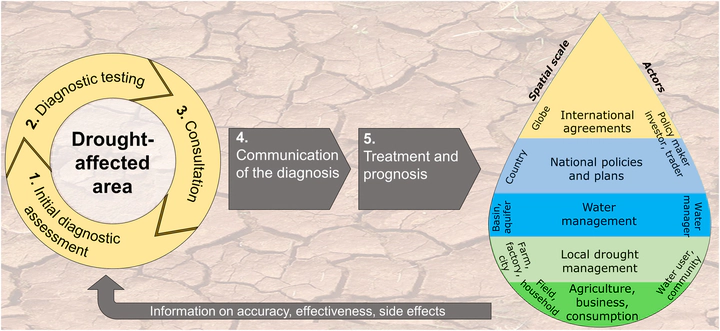
Abstract
Drought management is currently informed by a variety of approaches, mostly responding to drought crisis when it happens. Toward more effective and integrated drought management, we introduce a conceptual drought diagnosis framework inspired by diagnostic concepts from the field of medicine. This framework comprises five steps: 1. Initial diagnostic assessment; 2. Diagnostic testing; 3. Consultation; 4. Communication of the diagnosis; and 5. Treatment and prognosis. To illustrate the need for the proposed approach, four case studies of recently drought-affected regions were selected: the city of Cape Town, the state of California, the Northeast region of Brazil, and the Horn of Africa. Contrasting elements for these cases include the geographic extent and political boundaries, climate, socio-economics, and the relevance of different water resources (e.g., rainfall, reservoirs, and aquifers). For each case, we identified documented practices and policies and reflected on them in terms of drought misdiagnosis or incomplete diagnosis that have aggravated socio-economic and environmental drought impacts. A common example is the preference for technical solutions (e.g., installing infrastructure to augment water supply), rather than measures that reduce vulnerability. Analysis of these four drought case studies confirmed the anticipated need for a comprehensive approach to drought diagnosis for more successful treatment and prevention of drought. Using an analogy with medical science can be helpful toward comprehensively diagnosing droughts for a variety of contexts and assessing the effectiveness of proposed interventions. This framework can help drought managers to be more proactive in enabling drought-affected regions to become more drought resilient in the future.